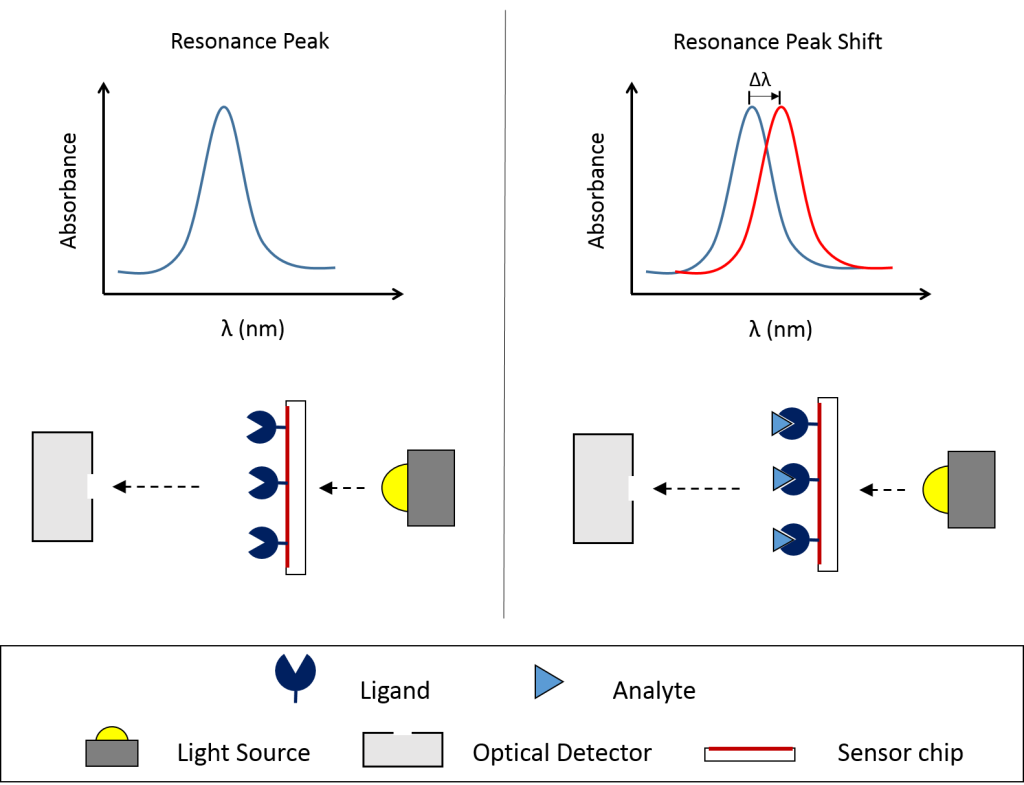Localized surface plasmon resonance is generated by metal nanoparticles, typically gold or silver, as compared to a continuous film of gold as used in traditional SPR.
OpenSPR is similar in many ways to traditional SPR, and provides the same data using the same experimental conditions and procedures. To the user, everything would seem the same between other SPR instruments and OpenSPR. However, OpenSPR uses what is known as localized surface plasmon resonance (LSPR).
Localized surface plasmon resonance is generated by metal nanoparticles, typically gold or silver, as compared to a continuous film of gold as used in traditional SPR. LSPR produces a strong resonance absorbance peak in the visible range of light, with its position being highly sensitive to the local refractive index surrounding the particle. Therefore, OpenSPR measures small changes in the wavelength of the absorbance position, rather than the the angle of light reflected off the gold film as in traditional SPR.

Using LSPR instead of SPR has a number of significant advantages:
- The optical hardware needed for LSPR is much less complex since no prism is needed to couple the light, so the instrument can be made smaller and more affordable
- Since measuring a reflected light angle is not important, the instrument is much more robust against vibration and mechanical noise
- LSPR is not as sensitive to bulk refractive index changes, which can cause errors in the experimental data
- No strict temperature control is needed, simplifying the instrument
- The sensor chips can be manufactured at a much more affordable price
- Easier to use and maintain
Although SPR sensors have a much higher refractive index sensitivity (m or RIS) than LSPR sensors, their sensitivity towards biomolecular binding events is similar. This is due to the much shorter electromagnetic decay length (ld) of nanoparticles compared to gold films, which confines the response to a smaller sensing volume. An LSPR’s sensor response (R) to an absorbed layer can be modeled with the following equation:

Where ∆n is the difference in refractive index between the absorbed layer and the surrounding medium, and d is the thickness of the absorbed layer.
The smaller decay length of LSPR versus SPR is illustrated in the image below. This smaller confined sensing volume means that LSPR is more sensitive to molecular binding events at the surface. The smaller decay length and lower background sensitivity associated with LSPR reduces artifacts caused by external variables such as temperature drift or buffer refractive index changes while still being highly sensitive to binding events.
Make your next scientific breakthrough with SPR
Are you looking to obtain affinity and kinetics data for your next publication? To help you get started, we’ve gathered our expertise on this information-rich technique into a handy eBook.

